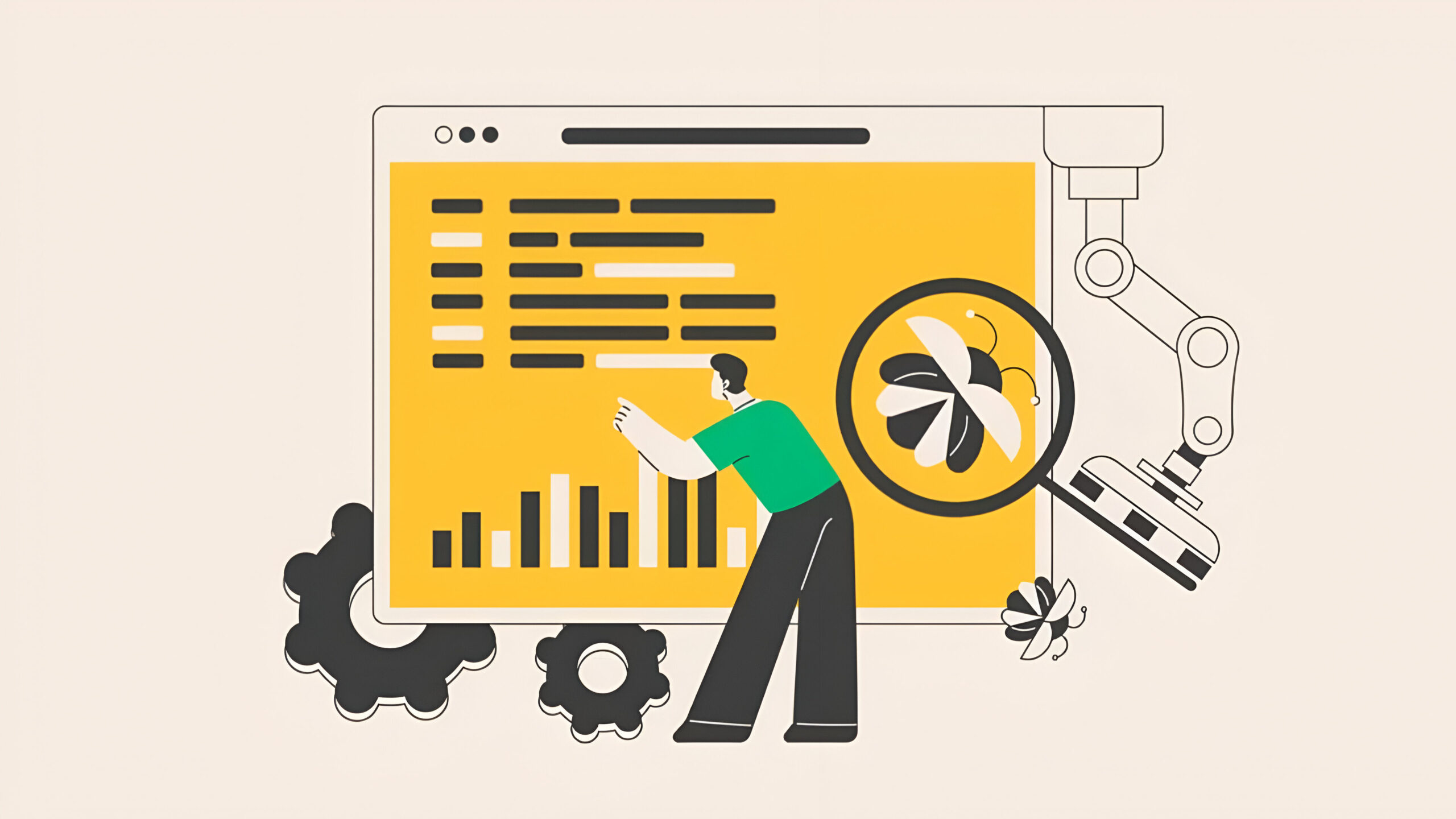In today’s dynamic software development landscape, automation is integral to the testing process. Effective automation enhances efficiency, reduces costs, and ultimately improves software quality. This article explores five best practices for implementing automation in testing processes, providing actionable insights for optimizing your testing strategy.
I. Align Automation Goals with Business Objectives
Any successful test automation must align with broader business objectives. Alignment is an assurance that your automation will return measurable value and be a definite contribution to the very success of the organization.
Define Clear Objectives
Before embarking on automation, there is a need to set specific goals that will easily resonate with your company strategy. By doing so, you’ll set the stage for remarkable improvements:
- 20% increase in productivity.
- 15% reduction in operational costs
These figures reflect a solid case for why automation initiatives need to have clear business-aligned goals.
Prioritize Test Cases
After defining what your goals are, you need to prioritize which test cases to automate. Focus on:
- Repetitive tests
- Time-consuming scenarios
- Processes prone to human error
Most of the Return on Investment is acquired from this automation. It is a fact that automating repetitive and high-risk test cases can yield an ROI of up to 300% by reducing the amount of time spent on manual testing.
II. Select the Right Tools and Frameworks
The time has come to choose the tools and frameworks that will help bring your automation vision into being. The right choice will make or break your initiative.
Tool Compatibility
When choosing automation tools, take their interoperability with your current technology stack into consideration. 70% of organizations say tool interoperability has a strong impact on how successful their automation initiatives are. Look for tools that:
- Integrate with your current systems
- Across multiple platforms and environments
- Scale as your automation needs grow
Selecting the best automation tools is crucial for ensuring that your strategy is effective and adaptable as your needs evolve.
Behavior-Driven Development (BDD)
It can also help bridge the gap between technical and non-technical individuals by using BDD frameworks, which allow tests to be written in languages more understandable to developers, business analysts, or any other stakeholder.
The same can be said for teams that have utilized BDD frameworks. In creating test cases, they have reported development time reduced by up to 30%. This brings efficiency and clarity at all levels.
III. Implement Data-Driven Testing
With the right tools in hand, it’s time to implement data-driven testing. This strategy decouples test data from scripts, offering greater flexibility and reusability.
External Data Sources
External data sources will let you:
- Run hundreds of test scenarios without any changes to your test code.
- Expand test coverage by 50%.
- Keep pace with changing test requirements.
Maintain Test Data Quality
The success of data-driven testing is nearly directly proportional to the quality of your test data. Ensure that your data is:
- Accurate
- Relevant
- Up-to-date
High-quality test data can reduce test flakiness by 40%, leading to more reliable test outcomes and fewer false positives.
IV. Integrate Automation into the CI/CD Pipeline
To get the most out of test automation, you want to integrate it into your Continuous Integration and Continuous Delivery pipeline.
Continuous Integration and Delivery
By integrating automated tests into your CI/CD pipeline, you can:
- Integrate automated testing into your CI/CD pipeline and:
- Find defects earlier in the development cycle
- Reduce average time to detect defects by 40%
A significant improvement in overall software quality
Integrating automated testing means that probable issues are known and solved far away from production.
Automated Feedback Loops
Set up feedback loops in real-time to let developers identify and fix defects on time. This kind of proactive attitude can:
- Reduce developer time spent on issue fixes by up to 30%.
- Improve code quality from the outset
- Enhanced collaboration between the Development and Testing teams
V. Continuous Monitoring and Maintenance
Even after deeply integrating automation into your CI/CD pipeline, the journey does not stop here. Continuous monitoring and maintenance are very important in keeping your automated test scripts relevant and efficient.
Regular Updates and Refactoring
As your application evolves, so should your automated tests. In other words, periodically refactor and update your test scripts to keep up with the existing functionality and increase test efficiency by reducing technical debt.
Monitor Test Results
Use dashboards and analytics tools to track test execution and results continuously to help you: Identify patterns in test failures
- Address recurring issues promptly
- Identify patterns in test failures
- Improve overall test quality and reliability
These monitoring practices allow a developer to be confident that their automation efforts are still relevant and will continue to provide value over time.
Comparison Table: Manual vs. Automated Testing
Further illustrating the benefits of automation, consider the following comparison table between manual and automated testing across several key factors:
| Factor | Manual Testing | Automated Testing |
| Speed | Slower, limited by human capacity | Faster, can run 24/7 |
| Accuracy | Prone to human error | Consistent results |
| Cost | Higher long-term costs | Higher initial investment, lower long-term costs |
| Coverage | Limited by time and resources | Broader coverage possible |
| Repeatability | Difficult to replicate exactly | Easily repeatable |
| Flexibility | More adaptable to changes | Requires updates for changes |
| Complex scenarios | Can handle unpredictable scenarios | Excels in repetitive, predictable tests |
This table points out the strengths of automated testing in places like speed, precision, and long-term cost-effectiveness.
Conclusion
Automation in testing processes is no longer a luxury; it’s a necessity for staying competitive in the fast-paced software development market. You will automate as much as you want: aligning your automation goals to business objectives, choosing the right tools, implementing data-driven tests, making sure to integrate with the pipeline of CI/CD, and keeping a robust monitoring system in place for improving both testing efficiency and software quality.
Keep in mind that your journey toward effective test automation is one of continuous improvement. Keep reassessing and improving your approach so that your automation strategy will keep pace with your organization’s evolving needs as well as changes in technology.
Frequently Asked Questions (FAQs)
How do I know what tests to automate?
The test cases that are more repetitive, time-consuming, and highly subject to human failure should be run first of all. Keep a focus on regression tests, high-impact areas, and critical business processes. Consider how often the tests will be run and how stable the feature under test is.
What are common challenges I’ll face when integrating automation into CI/CD?
Common challenges include stabilizing the tests, test data management, and making automated tests efficient in their performance within the constraints of the pipeline. You may also be having problems with things like test environment consistency or, in general, an increase in the level of complexity brought by a CI/CD pipeline.
How often should you review and update automated tests?
It would be desirable to review automated tests at least once after every major update or release of an application. This would ensure they are relevant to the current functionality and performance expectations. Also, do a quarter-long review of your test suite. This will be important in detecting obsolete tests, updating test data, and refactoring the test execution.
What metrics should I track to know whether my test automation is successful?
Some of the key metrics include:
- Test execution time
- Defect detection rate
- Test coverage
- ROI of automation
- Reduction in manual testing effort
- Time saved in regression testing
How do I know whether my team has the necessary skills for test automation?
Invest in the team’s automation-related skills. You can consider hiring specialists or consultants who will help you with initial automation efforts. Knowledge sharing within the team and hands-on experience with automation tools and frameworks would help immensely.





